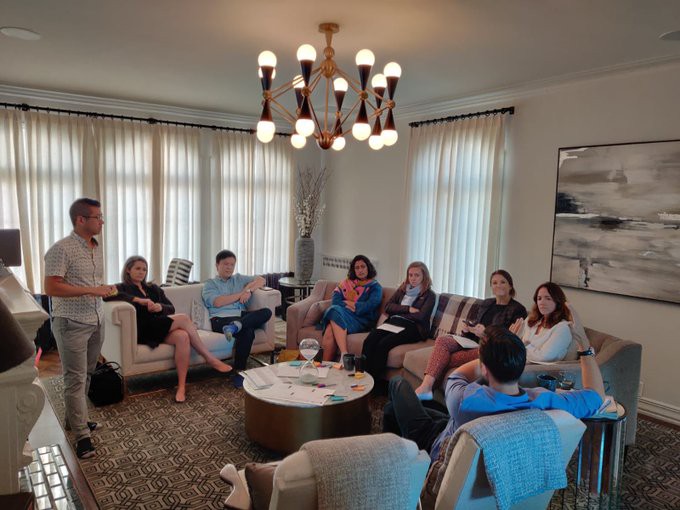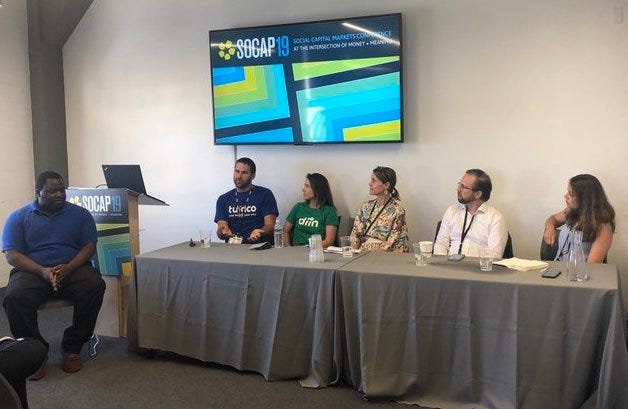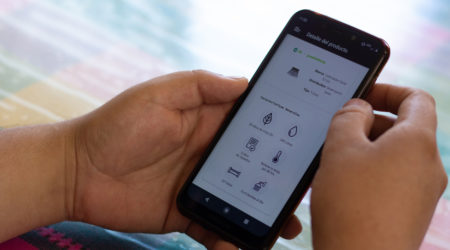Designing fintech solutions for inclusion: key takeaways from SOCAP 2019

“A truly inclusive innovation only works if it is adopted by the end-users it’s designed to serve.” — Maelis Carraro, Director, BFA Global Catalyst Fund
Themed Accelerating a New Global Market at the Intersection of Money + Meaning, SOCAP is the largest annual gathering of the global impact investing community, and takes place every year in San Francisco. In my first SOCAP 2019 experience as part of the Catalyst Fund team, I witnessed our portfolio company founders spend a week navigating conversations with impact-minded investors, founders, and supporters across every vertical and market, putting the pitch prep and investor readiness conversations they’d worked on over the last six months to the test.
As part of our acceleration program, every year, the BFA Global Catalyst Fund team brings our portfolio companies to San Francisco for SOCAP. Last month, founders from all over the world flew in to join the team, along with experts including Paul Breloff of talent firm Shortlist and human-centered design expert John Won, for a week of discussions, workshops, questioning, and meetings with a variety of impact investors.

As part of our mandate at Catalyst Fund, we aim to share insights and lessons learned from our experience accelerating 25 inclusive fintech companies in emerging markets globally. At SOCAP, we curated a conversation around best practices in designing solutions for low-income populations, titled Conscious coupling: how to ensure tech innovation does not undermine inclusion.
Catalyst Fund Director Maelis Carraro led the panel, joined by three of our portfolio founders — Ham Serunjogi of Chipper Cash, Ted Pantone of Turaco, and Monica Saccarelli of Diin — along with our partners Camilla Nestor of MIX, and Alex Lazarow of Cathay Innovation.
Here are some key takeaways:
Leverage your customers’ existing habits, behaviors, and familiar touchpoints
Ted Pantone, CEO of insurance startup Turaco, discussed how he and his team leverage technology to offer a “non-tech” product in line with the current habits and preferences of their target audience.
Turaco’s customers prefer services that are affordable, easy to understand, and don’t require them to take unnecessary steps or payments. As a result, the insurance products Turaco offers are simple and don’t include a fancy app or complex technology. Instead, the team has chosen to piggyback off the growth of digital lending in Kenya, where 35% of mobile phone owners report borrowing from a digital lender.
Turaco’s target customers are often already customers of these lenders. As a result, they are familiar with the process of making regular mobile payments and are already paying mobile lenders at regular intervals. Understanding this behavior, Ted’s team partners with such platforms to add an insurance offering on top of payments customers are already making — increasing retention by minimizing additional steps customers would otherwise need to take in order to make insurance payments.

Generate trust with customers via trials and brand visibility at the beginning
For companies working in emerging markets, building trust with customers from their first touchpoint is key — but fintech companies often find this difficult due to a lack of physical contact with end-users. At Catalyst Fund, we’ve compiled a toolkit to help founders determine the best way to design products for trust along each step of the customer journey.
On the panel, Monica Saccarelli, CEO of Brazilian microsaving platform Diin, discussed the role that founder personas and a brand’s online presence can play in building trust among end-users, especially when developing inclusive products in Latin America. “They need to know the team exists. It’s really important. They need to see I am real and speaking,” Monica said.
Monica engages her users via a strong social media presence and videos on YouTube, which show her speaking on topics around saving and finances. In this way, she reveals the person behind the app. At BFA, we’ve found that it’s often difficult for low-income users to trust digital applications and accounts with their money as it’s not tangible like cash. If they can get to know the person that built the product they are using and they feel they can trust that person, it can make the offering more concrete.
Monica also mentioned that customers like to “try” the product by depositing and withdrawing right away. “They want to see the product works and their money is safe,” she noted. Diin makes it easy to deposit just R $1 and then withdraw it immediately, enabling them to generate trust and a sense of security.
Turn your customers into advocates by delighting the first 100
“Your first 100 users are the most important because they’ll bring on the next 1,000.” — Ham Serunjogi, CEO, Chipper Cash
Ham discussed Chipper’s methods for building users’ trust with his cross-border payments solution in Africa. Up through the first 500 users, Ham personally called each and every one of them to hear their feedback, and to reassure them that there was a real team behind the app. The team was truly obsessed with customer experience — and it paid off. Since launching in October 2018, Chipper has averaged 40% month-on-month growth and already serves over 500,000 users.
“I used to call all of my first-time users to make sure everyone was secure in the fact that we’re real, and we’re building something that works for them,” Ham said. “I still let the first customers call me or text me directly. Now we have over 500,000, but if I could, I’d still call them one by one.” As a result, the Chipper Cash team was able to turn those first customers into advocates for the service who helped spread the word to others like them.
The team has also iterated on learnings gleaned from the feedback these initial customers shared. Today, they continue to employ such growth hacking strategies to continuously improve on everything from colors within their app to the content they provide their users.
_____________
Unlock capital and develop pathways for inclusive fintech innovation to scale
Designing products to truly reach low-income consumers requires a significant understanding of the market, openness to experiment with tech and touch, and the diligence to test and iterate based on customer feedback.
No matter how well designed, in order to get these solutions to scale, it’s important that the economics of their business models also work. “One way to get impact at scale is when the impact of a business is tactically tied to the financial success of a business,” Alex Lazarow of Cathay Innovation noted. In his upcoming book, Out-Innovate: How Global Entrepreneurs — from Delhi to Detroit — Are Rewriting the Rules of Silicon Valley, Alex offers a new blueprint for entrepreneurs operating in markets outside of Silicon Valley, illustrating why it’s vital that they design their businesses to be ‘global from birth.’
For this reason, Catalyst Fund works closely with its portfolio to develop not only the product, but a company’s business model and market approach.
However, more often than not, even the most promising inclusive solutions will still fail to see the light of day, because access to the early-stage capital, talent, and support needed to test and iterate these solutions in-market is not available. During this point, founders often find themselves in a ‘valley of death’.
One reason for the continued funding gap, despite an overall increase in capital raised in emerging markets, is that the majority of funding — particularly in Sub-Saharan Africa — has historically been concentrated among a few companies. Citing their Inclusive Fintech 50 White Paper, Camilla Nestor of MIX noted: “Within the [Inclusive Fintech 50] African cohort, 70 percent of the capital went into just seven of the companies.”
According to the white paper, in 2018, fintech companies in Sub-Saharan Africa raised, on average, US $260,000. This is the lowest for any region globally, and well below the global average of $598,000. MIX is building data tools to help a wider range of early stage fintech companies gain visibility with investors, as one way to close these gaps. Panelists discussed how we can overcome this “Africa penalty,” with some, like Ham of Chipper Cash, choosing to move to San Francisco to follow funding opportunities — an opportunity few African founders have.
Catalyst Fund exists to overcome this funding gap for inclusive fintech companies and help them circumvent the valley of death. We provide our portfolio with flexible grants at the time when they need cash the most, and dive deep with them on product and business model design, led by BFA Global expert venture builders who can leverage their experience building inclusive fintech solutions in emerging markets.
Today, we’re also doubling down on efforts to strengthen the innovation ecosystem around these entrepreneurs in an effort to close the funding gap, enable pathways to scale via key partnerships, and help companies find the talent they need to achieve growth as we collectively work to meet the needs of the world’s three billion underserved.


